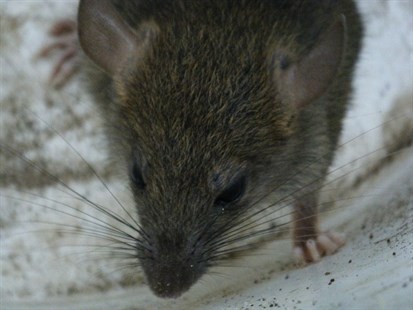
This rat was photographed in the driveway of a Vancouver suburb.
Image Credit: Wikipedia
October 03, 2013 - 10:40 AM
KELOWNA – You might not be the only one coming in from the cold this fall.
With temperatures starting to drop and central heating kicking in, a warm household will be a welcome sign for some animal neighbours – like the rat.
Orkin Pest Control customer service representative Cheryl says it's that time of year again.
“It's cooled dramatically,” she says and that means rats will be seeking a warm place to breed over the winter. Being opportunistic creatures, the more food and water available the more rapidly they can reproduce.
How do they squeeze their way in?
It's as easy as leaving your door open while fetching groceries from the car, she says. That, or any hole at least the size of a quarter.
“Is it more than usual? Not really,” she says.
While some media have reported infestations in the Glenmore area, local pest control companies aren't noticing a surge in complaints.
However, in recent years more rats have come to Kelowna. Any kind of development that destroys a natural habitat is likely to stir up activity, Cheryl says. Construction work can disrupt rats nesting in burroughs underground, for example.
“People forget that they were there before you built your house.”
Budget Pest Solutions owner Kurt Wallman says they were once a problem in Penticton and have gradually migrated north into areas of West Kelowna, particularly mobile home parks with less solid skirting.
"That's the only residential job I've done for rats so far - in a mobile home," he says. "Other than that, I haven't had a rat request in Kelowna."
Unlike big cities such as Vancouver or Winnipeg, our downtown is very clean, he says, with daily garbage pick-up making it less hospitable to rodents.
What to watch for
Not all rats are created equal, Cheryl says. Any of the following three varieties can nest in a house:
The "rat rat,” also known as the Norway rat, a common ground-dwelling rodent found in cities.
The roof rat, which gravitates to higher elevations and is therefore less likely to be spotted.
Last, but not least, is the woodland pack rat. It's a highly intelligent rodent that can temper its food instinct if something more desirable comes along. They are known to breed in large odorous nests where males defend their turf aggressively through scent spraying. Their chinchilla-like appearance can be deceiving though and even tempt some people to feed them.
To help prevent nesting, homeowners should seal up any openings in the house, around dryer vents, eaves and screens.
Failing that, a feline companion with a predatorial instinct should help bring the matter to your attention.
To contact the reporter for this story, email Julie Whittet at jwhittet@infotelnews.ca or call (250)718-0428.
News from © iNFOnews, 2013